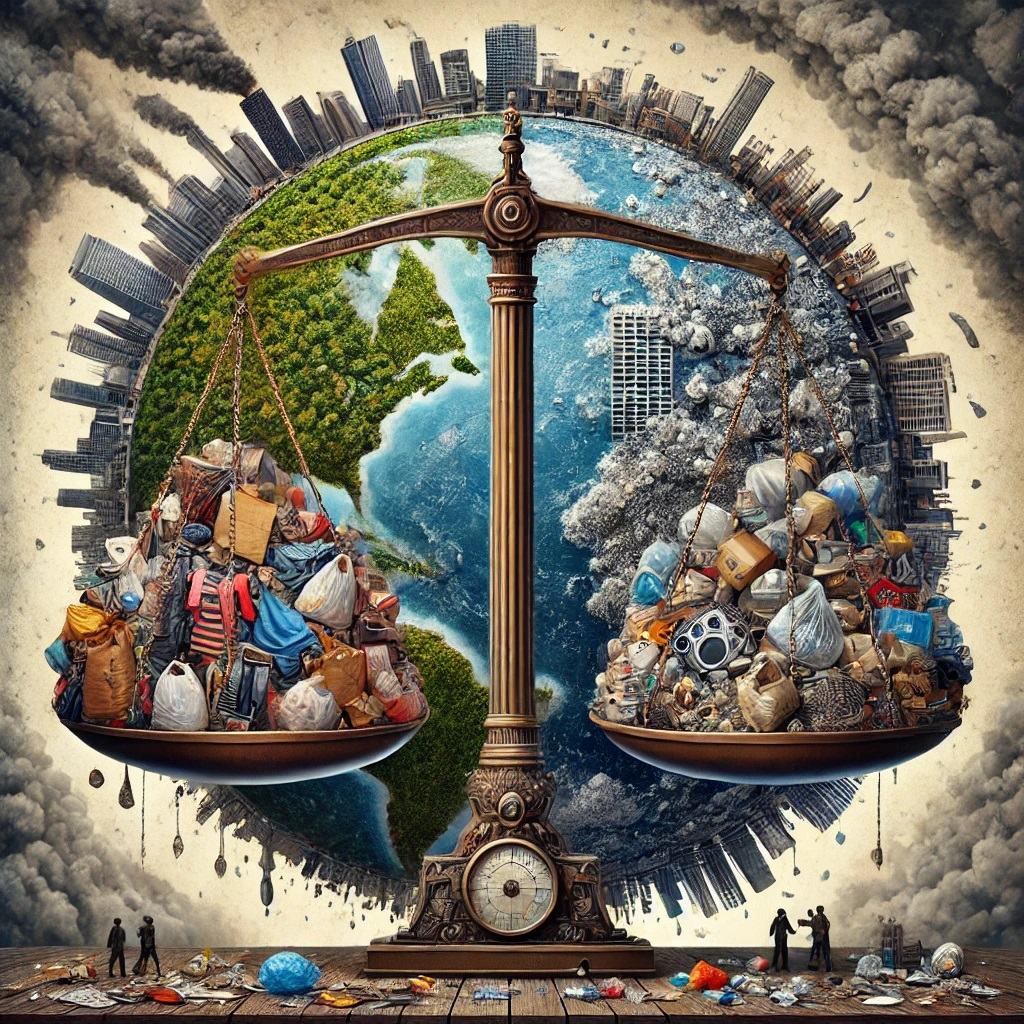A photographer aiming to influence debates on consumerism, climate change, population growth, and healthcare policies (like IVF funding) could use their medium to engage audiences emotionally, visually, and intellectually. Photography, with its unique ability to capture moments and evoke powerful responses, offers several strategic avenues to shape public opinion and raise awareness on these topics. Here are some approaches:
Documentary Photography
The photographer could create a series of images that document the direct effects of consumerism and climate change on the environment. For example, images of plastic waste in oceans, deforestation, and polluted urban areas could viscerally illustrate the environmental damage tied to unchecked consumption. Similarly, documenting the impact of population growth on vulnerable ecosystems, urban sprawl, and overburdened healthcare systems could emphasise the need for action.
Impact: By showing the human and environmental toll, this type of photography can raise awareness and provoke reflection on the consequences of consumerism and unsustainable population growth. Photographers like Sebastião Salgado, who have tackled environmental and social issues, have used this style to great effect.
Portrait Photography
The photographer could create a series of portraits focusing on individuals affected by these issues, such as communities impacted by climate change or families who have benefited from (or been denied access to) IVF. By humanising these complex topics, a photographer can create empathy and understanding among audiences who might otherwise find the abstract nature of the issues difficult to engage with.
Impact: Portraits that tell individual stories can shift the debate from data-driven arguments to more personal narratives, compelling viewers to reconsider their positions by connecting emotionally to the subjects.
Conceptual Photography
Conceptual photography offers another avenue by using symbolism and metaphors to comment on issues like overconsumption and environmental degradation. For example, a series that juxtaposes over-consumed products (clothing, gadgets, etc.) with images of natural resources could serve as a visual critique of consumer culture’s unsustainability. Similarly, images that explore the emotional weight of population growth—perhaps by illustrating the demands placed on the Earth through striking, staged compositions—could make the issue more accessible.
Impact: Conceptual work often encourages viewers to interpret deeper meanings and can stimulate intellectual debates by providing new ways to view familiar topics. This type of photography often resonates in art galleries, magazines, and social media.
Advocacy Campaigns and Photojournalism
By collaborating with environmental NGOs, healthcare advocates, or human rights organisations, photographers could use their work in advocacy campaigns to influence policy change. For example, a campaign highlighting the wastefulness of fast fashion could use hard-hitting photojournalism to show the lifecycle of clothing—from production to landfill.
Impact: Visual advocacy tied to concrete campaigns can be a powerful tool for changing public policy. High-profile projects, such as the work of photojournalists in publications like National Geographic or The Guardian, can help spread awareness on a broader scale.
Exhibitions and Talks
Photographers can also host exhibitions that centre around climate change, population control, or the ethics of healthcare. Accompanying the images with artist talks, panel discussions, or debates can provide a platform to explore these issues in greater depth. These exhibitions could travel through community centres, universities, and museums to engage a wide audience.
Impact: Exhibitions offer a space for reflective engagement. When paired with interactive or educational components, they can spark discussions on the issues and lead to a deeper understanding among diverse audiences.
Before-and-After Comparisons
A visual technique that can powerfully influence opinion is the “before and after” comparison. For example, photographing a location before and after significant environmental degradation due to consumer activities, or showing the strain on healthcare resources as population demands increase, can graphically represent the effects of these issues.
Impact: Before-and-after images create a stark contrast that can leave a lasting impression on viewers, driving home the urgency of action by visually demonstrating change (or destruction) over time.
Social Media Photography Projects
In today’s digital age, social media offers a platform to reach a wide and diverse audience quickly. A photographer could create a viral photography series or campaign on platforms like Instagram, using hashtags, storytelling captions, and interactive elements to provoke discussions about consumerism, climate change, or IVF.
Impact: Social media allows for rapid dissemination of images and ideas, and the photographer can directly engage with the audience in real time, fostering discussion and sharing of ideas. Well-crafted, socially relevant images on these platforms can be shared broadly, amplifying their influence.
Collaborative Projects with Researchers or Writers
By collaborating with academics, activists, or writers, a photographer can pair their visuals with hard data or narratives, enhancing the message’s effectiveness. For instance, a project that combines environmental research on climate change with a series of photographs showing the impact of extreme weather events on communities would provide both emotional and intellectual engagement.
Impact: Combining art with academic research can help ensure that visual storytelling is grounded in fact, adding credibility and depth to the message while reaching a wider audience that might be drawn in by the emotional power of the images.
Photography, then, can be a potent tool for influencing public opinion and political debate on complex issues like consumerism, climate change, population growth, and healthcare policies. By using the emotional impact of imagery, photographers can bypass intellectual resistance and provoke reflection and empathy in viewers. Whether through documentary work, conceptual art, or advocacy campaigns, photographers can foster engagement with these issues and help shape the ongoing discourse around sustainability, ethics, and human responsibility. By making abstract concepts visible and personal, photography has the power to influence how people understand and react to the pressing environmental and social challenges of our time.


